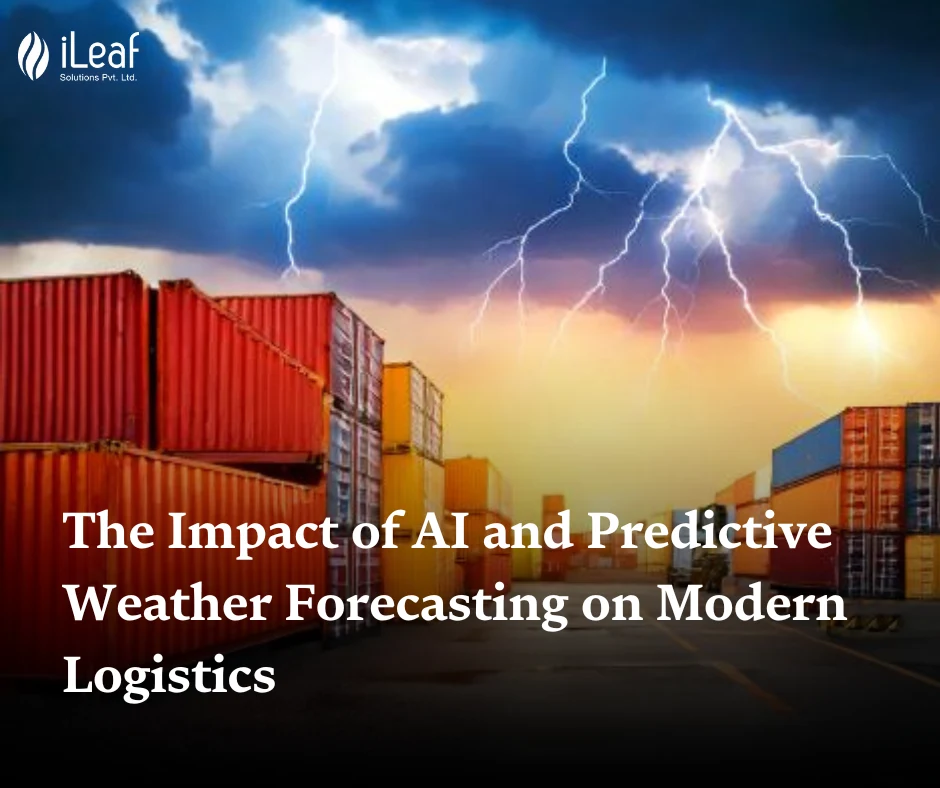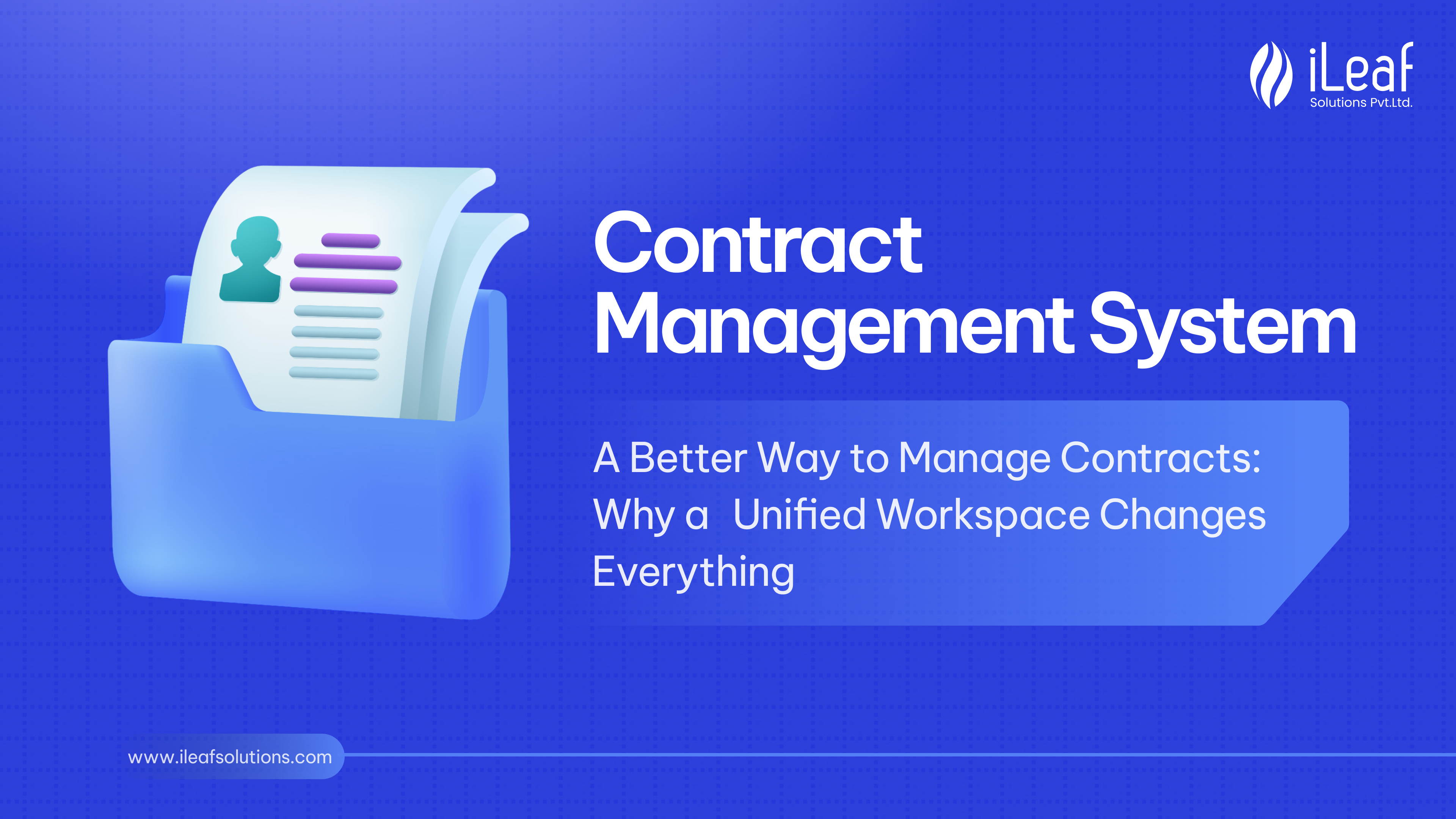AI and Predictive Weather Forecasting: From Disaster Prevention to Business Estimation

Table Of Contents
Introduction
1. Predictive Weather Forecasting in Logistics
2. How AI Enhances Predictive Power
3. Application of Practical AI and Predictive Weather Forecasting in Logistics
4. Real-World Case Studies
5. Financial and Operational Benefits
6. The Future of AI and Predictive Weather in Logistics
Conclusion
Introduction
In the complex logistics universe, effectiveness and robustness are essential. Daily business operations and services are interrupted by numerous challenges that logistics companies encounter, with the weather being the most persistent and unpredictable obstacle. For instance, hurricanes, storms, and even minor weather changes cause major delays, destruction of packages, and costly surprises. Small disruptions in the global marketplace can lead to huge financial losses and a wave of customer complaints. The more innovative businesses in the industry are investing in strategies to overcome these challenges, including predictive models powered by technologies like AI (Artificial Intelligence) and early weather forecast predictions that allow for preemptive action.
Today’s logistics environment is driven by artificial intelligence and predictive analytics, which forecast weather patterns and enable firms to avoid major disasters, like floods or earthquakes, while ensuring they avoid continual operational losses. This paper examines how these two technologies work together, their added value, and what lies ahead for AI and weather-enabled transport systems.
1. Predictive Weather Forecasting in Logistics
Why Does Weather Matter in Logistics?
Weather plays a role in nearly every aspect of logistics. Heavy rain can disrupt loading schedules, while storms may damage vessels and ports, making them difficult to access with goods on board. Snow can bring ground transport to a standstill. When carrying items that spoil easily, like fruits or flowers, delays mean they may spoil before reaching their final destinations. Disruptive weather events create bottlenecks along supply chains, increasing costs through time-based lost opportunities. By providing early warnings, predictive weather forecasting enables companies to plan effectively.

Traditional weather reports provide large-scale environmental patterns but fail to achieve the detail and forecast precision needed for logistics success. Predictive weather forecasting, powered by AI and enhanced analytics, goes a notch higher by providing rich, location-specific insights and actionable information. This moves beyond simply predicting rain to knowing when it will rain on a specific road, allowing managers to decide whether to send packages now or later.
Businesses that use predictive weather models benefit in several ways:
Optimization of Paths: Companies using predictive insights can reroute goods immediately if adverse weather develops during transportation.
Increased Safety: They can identify high-risk areas well in advance, allowing them to make safety-oriented decisions.
Savings: By averting weather-related delays and damages, companies prevent unnecessary costs and penalties, reducing operational expenditures.
2. How AI Enhances Predictive Power
AI Basics for Predictive Models
AI systems excel at processing large amounts of data from diverse sources, identifying trends, and making precise predictions. For weather predictions, AI relies on data like satellite imagery and historical records of wind patterns or rainfall, as well as near real-time climate data from global weather stations. Through machine learning algorithms, AI reveals patterns that often escape human observation, thereby producing more accurate forecasts that help businesses make timely decisions.
One way AI supports logistics is through its capacity for continuous learning. Adaptable algorithms make increasingly accurate predictions over time as they incorporate new information, enhancing forecast accuracy—a critical asset in fast-changing industries like logistics.
Imagine an active hurricane affecting a key sea route for cargo vessels. Rather than waiting for updates, AI systems monitor storms in real-time and modify cargo vessel routes to avoid affected areas, thereby reducing risks to goods and vessels. This flexible, adaptive approach allows logistics companies to stay resilient.
3. Application of Practical AI and Predictive Weather Forecasting in Logistics
3.1 Route Optimization and Dynamic Re-Routing
With predictive weather models, logistics companies can optimize routes before dispatch and reroute shipments when conditions change. For instance, if a snowstorm is predicted on a major route, AI can suggest alternative paths or advise delaying transport to avoid accidents or delays. This saves fuel, prevents delays, and preserves goods.
3.2 Risk Mitigation and Loss Reduction
Accurate weather predictions allow companies to act in advance, reducing risks of accidents and damaged goods through proactive adjustments in operations. This minimizes spoilage for perishables, enhances driver safety, and reduces costly repairs and penalties.
3.3 Inventory Management
AI-driven predictive weather tools improve inventory management by anticipating demand based on weather patterns. For example, if an extended cold snap is forecasted, demand for heating supplies and other cold-weather products will likely surge. Companies can therefore plan inventory and transportation resources in advance to maximize sales and ensure customer satisfaction.
3.4 Resource Allocation
Weather conditions impact not only transit routes but also resource allocation within warehouses and distribution centers. AI-powered predictive insights allow companies to allocate labor and resources more effectively, increasing staffing before expected delays or scaling down to avoid excess costs during downtimes.
4. Real-World Case Studies
Case Study 1: A Global Retailer Using AI for Predictive Planning
One major retail chain partnered with an AI firm to strengthen its logistics during periods prone to winter storms. By using AI forecasting to reroute supply chains away from bad weather and allocate resources to less-affected areas, the company reduced shipping delays by over 30% and saw fewer weather-related damage claims.
Case Study 2: Food Logistics and Perishable Goods
A perishable goods logistics agency integrated an AI-based weather forecasting tool to optimize deliveries. The tool enabled them to avoid areas with risky weather, like thunderstorms, reducing product waste by as much as 20%. This preserved product freshness, which would otherwise be lost to premature spoilage.
Case Study 3: Emergency Response and Disaster Relief
During hurricane season, a disaster relief organization used AI-powered predictive weather to deploy resources more effectively, pre-positioning supplies and identifying safe transport routes. By proactively using data, the organization improved response times and ensured critical supplies reached affected areas faster.
5. Financial and Operational Benefits
Increased Profitability: Logistics companies can reduce operational costs, boost their bottom line, and avoid delays and damage. Reliable delivery even under adverse conditions enhances their reputation, allowing them to charge premium rates for dependable service.
Customer Satisfaction and Retention: Reliability is a key factor in customer loyalty. Freight companies that consistently deliver quality service can build trust and loyalty through AI and predictive weather forecasting.
Competitive Advantage: Companies that adopt predictive technologies will likely outperform their competitors. Predictive insights provide competitive advantages in better planning, fewer losses, and superior performance.
6. The Future of AI and Predictive Weather in Logistics
As AI and predictive weather technologies advance, logistics will become more data-driven, accurate, and resilient. For instance, AI combined with geographic information systems like Google Maps can handle many issues before they escalate, making logistics more efficient. Advanced AI models may soon predict not only immediate weather impacts but also long-term seasonal and regional trends, facilitating strategic planning.
Conclusion
In today’s fast-changing world, with constant technological advancements, AI technologies like machine learning (ML) and deep neural networks (DNNs) have become pillars for profitable, resilient logistics strategies. By integrating these technologies, companies can predict, prevent, and mitigate potential disruptions, even gaining a profit edge.
To thrive in the future, companies will need to act promptly on available data. AI-driven predictive weather forecasting is transforming logistics from a reactive industry to a proactive one, setting new standards of excellence.














